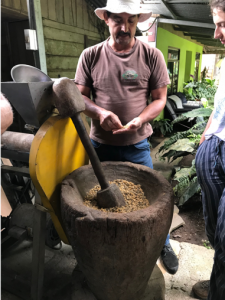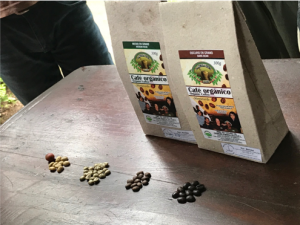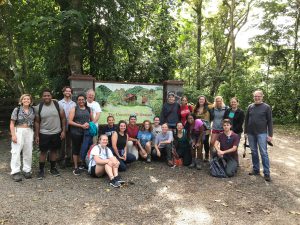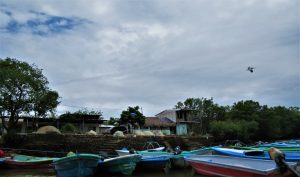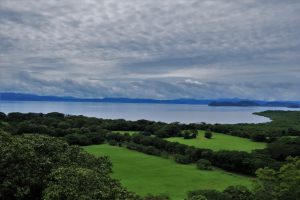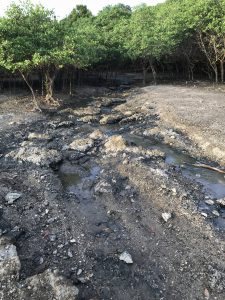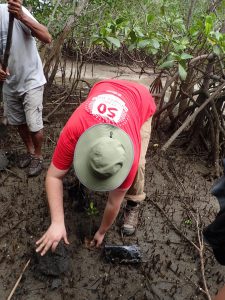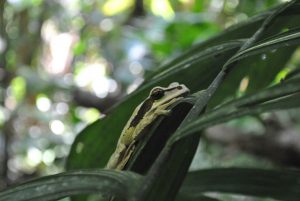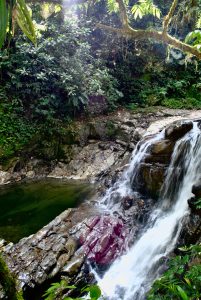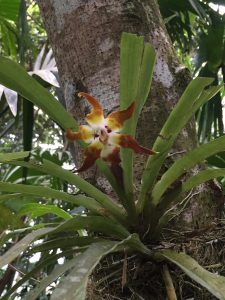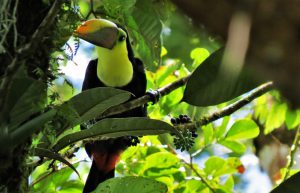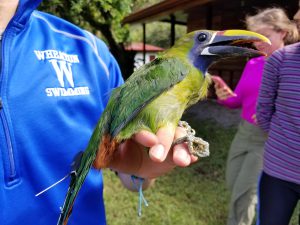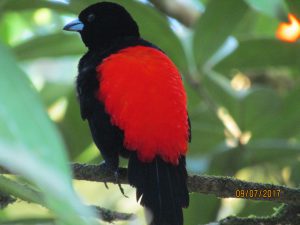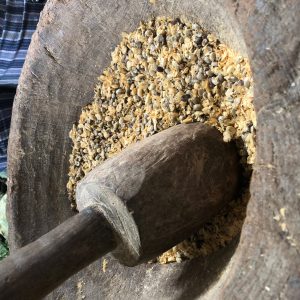 By Hannah Pike
By Hannah Pike
Coffee is among the most valuable legally traded commodities from the developing world (FAO 2014). In the 2018/19 season, coffee consumption is forecast at a record 163.2 million bags (USDA 2018). As consumption patter ns steadily increase, exports are expected to increase in response (USDA 2018). Here in Costa Rica, approximately 84,133 ha of the country’s land is covered in coffee plantations (USDA 2017). Traditional shade coffee growing practices involved growing coffee “under a diverse canopy of native forest trees” (Jha et al. 2014). Shade grown coffee is an agriculture production system which feeds into and benefits the ecosystem around it. Through this, coffee production doesn’t require full sun or the resulting deforestation to produce high yields. Rather, shade coffee benefits biodiversity levels in the surrounding areas (Perfecto et al. 1996).
ns steadily increase, exports are expected to increase in response (USDA 2018). Here in Costa Rica, approximately 84,133 ha of the country’s land is covered in coffee plantations (USDA 2017). Traditional shade coffee growing practices involved growing coffee “under a diverse canopy of native forest trees” (Jha et al. 2014). Shade grown coffee is an agriculture production system which feeds into and benefits the ecosystem around it. Through this, coffee production doesn’t require full sun or the resulting deforestation to produce high yields. Rather, shade coffee benefits biodiversity levels in the surrounding areas (Perfecto et al. 1996).
However, coffee farm area has declined as high-yield, full sun agriculture systems take over the global coffee market (Jha et al. 2014). This shift has caused a decrease in coffee prices (Jha et al. 2014). As a college student and an avid coffee consumer, this shift initially seems to benefit me without cause for concern. Yet changing coffee consumption patterns and prices can have serious effects on small scale producers. Small scale farmers receive a very small fraction of the profits from the coffee value chain (Gresser and Tickell 2002). Worse still, coffee laborers and pickers (often migratory) are the most vulnerable to shifting coffee values, and continue to be the most marginalized participants in this system (Gresser and Tickell 2002). Laborers tend to be paid per pound of coffee cherries harvested, regardless of changes in coffee prices on the consumption end. Here in San Luis, the certified local organic shade coffee producer, Odemar, pays two dollars per square foot of coffee cherries picked. As we drank dark roast coffee in his kitchen, he told us of their efforts to become certified as shade grown and efforts to restore the forest around them. They are now able to sell their coffee as organic and shade grown certified, and are proud that the coffee they produce is grown “in harmony with its surrounding natural environment.”

Not all farms work in this way. Certification services to verify organic or shade coffee production may raise export prices to the benefit of the farmer (Bacon et al. 2008), but often times these returns do not cover the cost of certification and maintenance (Calo and Wise 2005). In this way and in every other way, agriculture systems tend to be set up to benefit large scale, monoculture productions, often in full sun that degradation the surrounding area in marginalize farmer workers.
So, what can we do about this?
1. Read coffee labels. Purchase Fair Trade, Shade Grown, or Bird Friendly coffee. Try to purchase directly from farmers or roasters if at all possible. Purchase from our neighbor, if it befits you. http://bellaticacafe.com/.
2. If you feel you cannot afford to buy high quantities of certified coffee, make your coffee stretch. Brew your coffee in the fridge over night, allowing it to be stronger so you don’t need to drink it as frequently.
3. Most importantly: do not become despondent or callous to the inevitable wear of capitalism. Know your power. As a student, as a critic, and as a coffee consumer. Ask questions about the systems you participate in, and know you can choose to be a part of them.
Bacon CM, Méndez VE, Gliessman SR, Goodman D, Fox JA, eds. 2008. Confronting the Coffee Crisis: Fair Trade, Sustainable Livelihoods and Ecosystems in Mexico and Central America. MIT Press.
Calo M, Wise TA. 2005. Revaluing Peasant Coffee Production: Organic and Fair Trade Markets in Mexico. Global Development and Environment Institute.
[FAO] Food and Agriculture Organization of the United Nations. 2014. FAOSTAT. FAO. (5 March 2014; http://faostat.fao.org/site/567/ DesktopDefault.aspx?PageID=567#ancor)
Gresser, C. Tickell, S. 2002. (2013). Mugged: Poverty in Your Coffee Cup. Oxfam.
Jha, S., Bacon Christopher, M., Philpott Stacy, M., Méndez V., E., Läderach, P., & Rice Robert, A. (2014). Shade Coffee: Update on a Disappearing Refuge for Biodiversity. Bioscience, (5), 416.
Perfecto, I., Rice, R., Greenberg, R., & van der Voort, M. (1996). Shade Coffee: A Disappearing Refuge for Biodiversity. Bioscience, (8), 598. doi:10.2307/1312989
[USDA] USDA Foreign Agricultural Service. 2017. Global Agriculture Information Network. https://gain.fas.usda.gov/Recent%20GAIN%20Publications/Coffee%20Annual_San%20Jose_Costa%20Rica_5-22-2017.pdf






